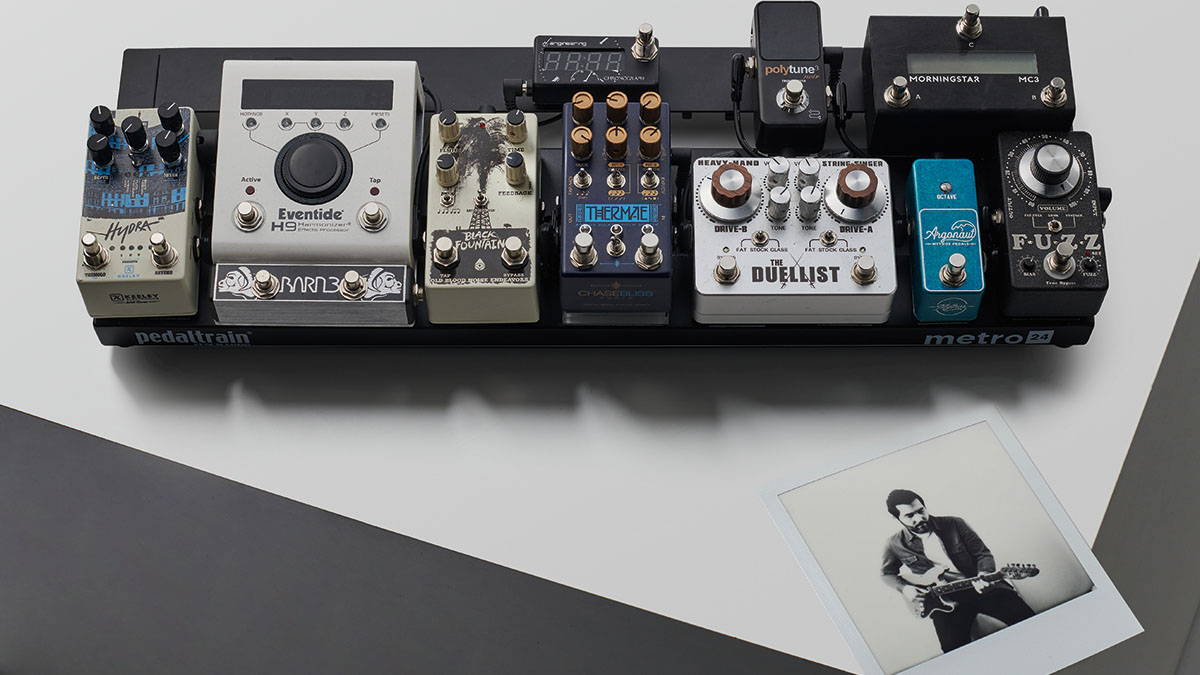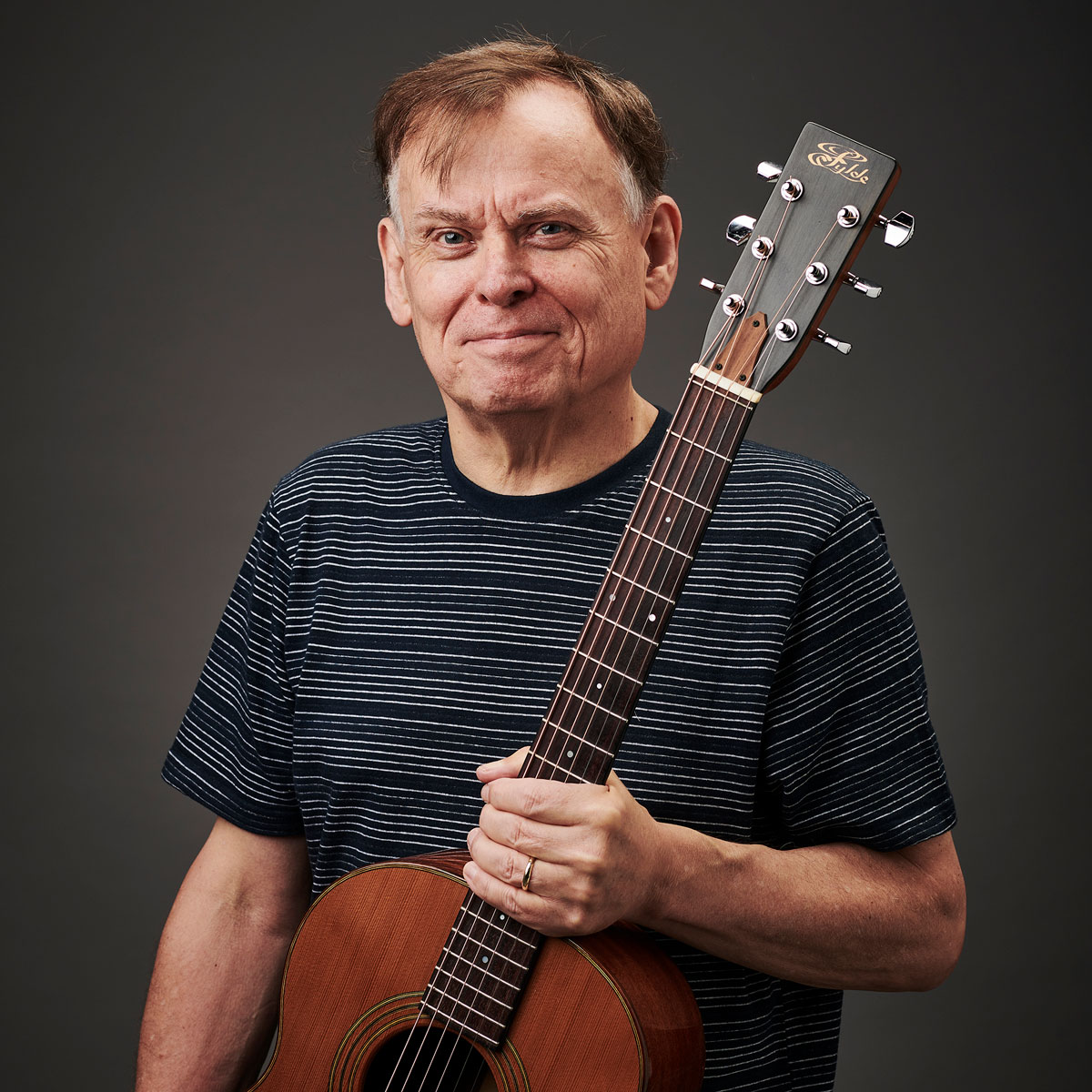Ariel Posen: “I have Telecasters that I like with 12s – I like a fight: I’m not a guy that’s ripping up and down the fretboard. I don’t need a fast action”
The renowned Canadian guitar virtuoso checks in to discuss his string gauge philosophy, love of alternate tunings and why he's so enamored with fretless guitars and rubber bridges
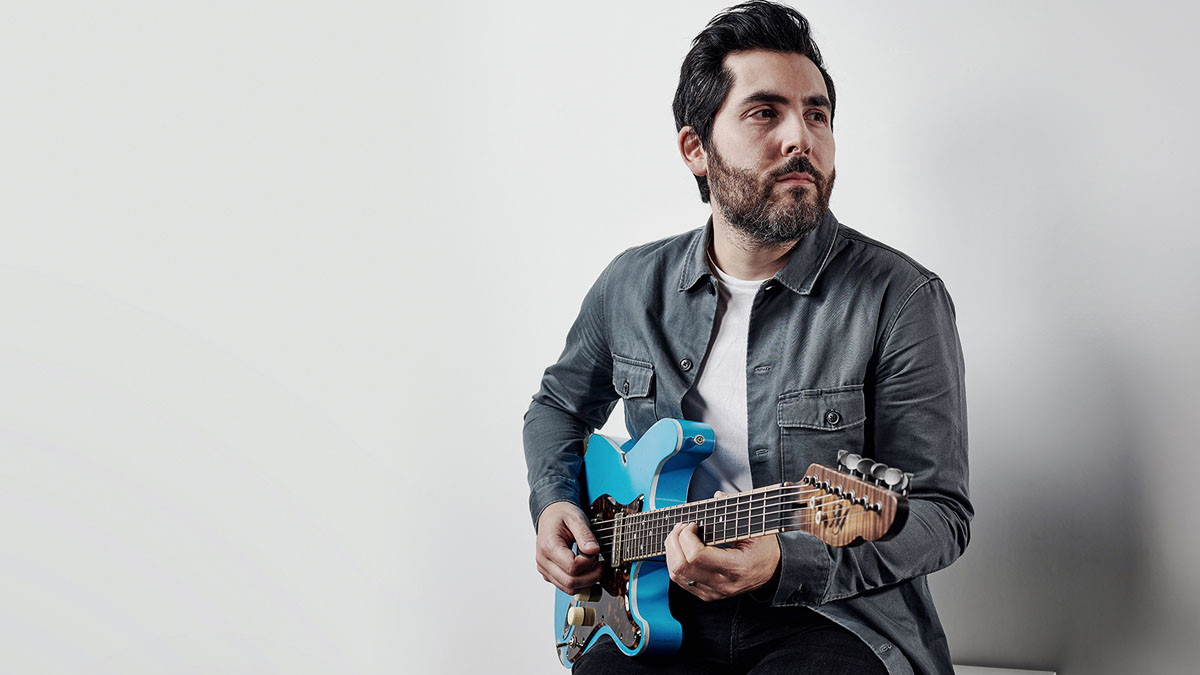
The first (and most obvious) question we ask Ariel as we settle down for our chat is if his current tour is going well. “I’m definitely feeling the love,” he says. “We tend to try to come here annually and I guess because it’s been over two years of not being able to, I feel like everyone’s hungry for music. I’ve just been over the moon with the show – it’s been amazing.”
When Ariel’s name comes up in a casual meeting of guitar players, the word you hear used most often is ‘tone’. He’s renowned for having created his own unique soundscape with custom instruments, including a mighty baritone, and a pedalboard that has been put together with an alchemist’s attention to sonic detail. Add to this some finely crafted songs and an exuberant live show, and it’s no wonder he’s playing to packed houses across the globe.
As we know, the wasteland created by the recent pandemic was a bad time for musicians, but the enforced hibernation it resulted in turned out to be a creative catalyst for Ariel. “Well, my lockdown time was very busy. I’ve been just writing a lot and putting out a handful of music. I put out my record Headway that came out at the beginning of 2021. I started recording that in December 2019 and then, once everything was ready, we were just playing the waiting game to release it.”
And there have been some subsequent releases, too?
“Well, I started writing a bunch of new songs and went into the studio in late 2021. I recorded about 20 solo improvised guitar pieces and I didn’t know what I was going to do with them. I sat on it for a few months and decided to put it all out as an album called Mile End. So 2021 was a very busy year of releases because I’d put out Headway at the beginning of the year and then a couple of months later I actually recorded an acoustic version of the whole album.
“Also, by the end of the year, I had written almost 30 songs – primarily a bunch of songs that were going to be on future records – but then I still had some songs that didn’t make the record for Headway.
“I also had a selection of five songs that I really, really loved, but I didn’t feel they had a place on future projects. I just wanted them to be their own thing, so I recorded them at the end of 2021 and that became the Downtown EP, which came out at the end of July 2022. That was the only record I’ve done for myself that was all remote. Drums were done by my friend Ash Soan in Norfolk. We then started touring again, at the end of August 2021.”
All the latest guitar news, interviews, lessons, reviews, deals and more, direct to your inbox!
So even through the pandemic, you managed to keep busy.
“Yeah, I was very grateful. It took a couple months to just feel purpose and just be inspired. But once it hit, I really got into it. Just the consistency and the routine of being at home lends itself very well to being creative. I had so many things I was already doing outside of just touring that were done at home – like recording sessions for people, occasional teaching, producing, doing the occasional live stream, stuff like that – so it was just like, ‘Okay, now everyone’s doing that, so I guess I’ll just keep doing it, or do a bit more of it.’
I don’t write on the road because it’s so full on, so much is going on... I have to do it at home where I’m just in a different mindset
“But once it hit, I really got into it. Just the consistency and the routine of being at home lends itself very well to being creative. I had so many things I was already doing outside of just touring that were done at home – like recording sessions for people, occasional teaching, producing, doing the occasional live stream, stuff like that – so it was just like, ‘Okay, now everyone’s doing that, so I guess I’ll just keep doing it, or do a bit more of it.’
“With writing, you know, I don’t write on the road because it’s so full on, so much is going on. I’m not really feeling creative in the sense that I’m not just going to mark off an hour or two to have a session. I have to do it at home where I’m just in a different mindset.”
Many people have said to us that they used that period to re-evaluate a lot of things.
“Yes, big time! I think I realised how burnt out I was. I love what I do and being busy and travelling around, but I was tired. As the first couple of things started getting cancelled or rescheduled, I was starting to feel down. Then as a few more things started getting cancelled and pushed back I started to get relieved. I think I needed the time and I tried to be light with it because I know a lot of people didn’t have a good time and lost people and lost work…
“I took it as a time to reignite everything I was grateful for. Sure, I would have loved to just keep trucking along like we were, but I tried to have my perception set the right way and take it for what it was and make the most of it, you know what I mean?”
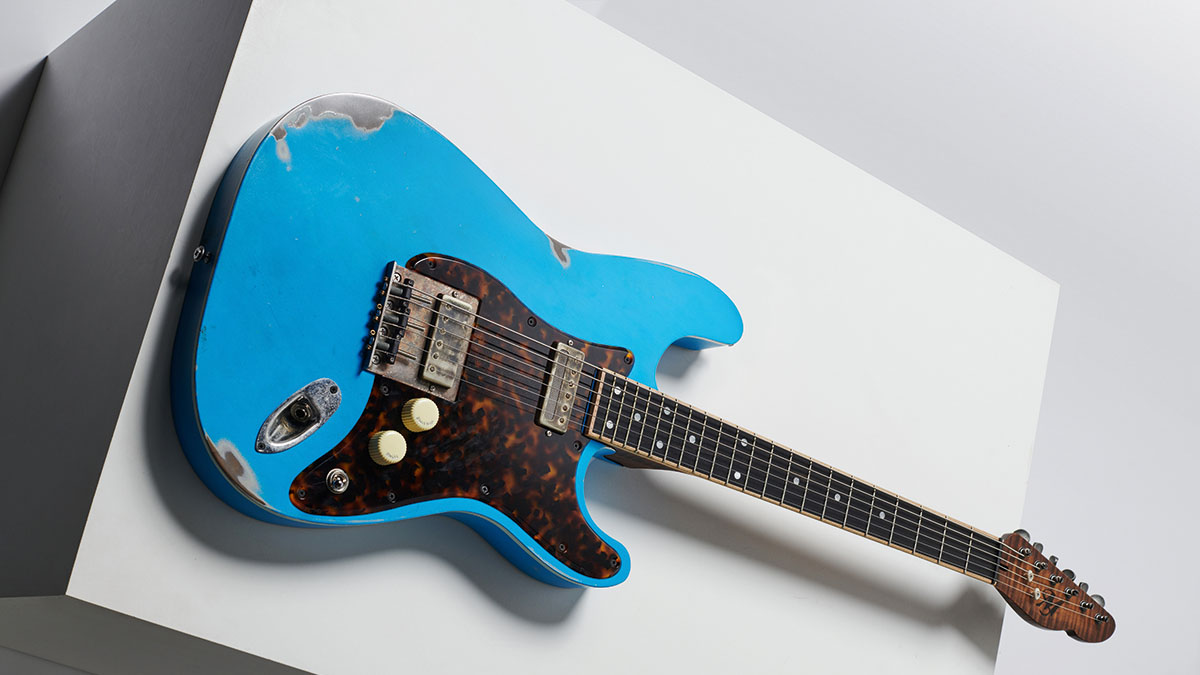
What range of gear did you take into the studio to do your different recording projects?
“I am always using my Two-Rock, my Victoria Reverberato, but we had a couple of other amps, too. But I think I primarily used the Two-Rock and I have a collection of guitars I like to use such as the [Mule Resophonic] StratoMule, the Jazzmaster, my Strat, my Josh Williams Mockingbird, my Collings 360, the Collings SoCo. That was for Headway.
“For Mile End, I went into the studio with the Mule, the Jazzmaster and I have a ’50s Kay, which is an acoustic and it’s [been refurbished] by this guy named Reuben [Cox] in LA’s Old Style Guitar Shop.
“He takes these old guitars and puts a rubber bridge and flat-wounds on them and pickup inside, and it gives you this really different, interesting sound. So Mile End is those three guitars and I ran them through an old Gibson Explorer amp and a ’60s, maybe a ’68, Super Reverb.”
I use my Broadcast-AP almost exclusively for recording – it’s my favourite recording pedal
Did recording the EP remotely mean a change of gear you had on hand to record with?
“Yeah, for the Downtown EP I had access to everything. So I used my Two-Rock and I used an Insulander combo amp, which is built in Stockholm and it’s like a 30-watt Fender-style amp. I used the Jazzmaster, the Mockingbird and the Mule. I have a Dahlberg fretless guitar made by these guys in Denmark.
“They built me this fretless electric with flat-wounds and I used that on the EP, which is very, very fun and different. The Kay is on there a lot, the rubber-bridge guitar. I’m probably forgetting some, but those are the main ones.”
What about outboard gear?
“For pedals, it was similar to what I have here today, but I use my [Hudson Electronics] Broadcast-AP almost exclusively for recording – it’s my favourite recording pedal. I like to mix different fuzzes – the DanDrive fuzzes are great, R2R Electric fuzzes I’ve been using a lot lately. There’s the Chase Bliss Automatone and the [CXM] 1978.
“The Poly Effects Beebo is a big one I use for recording. I have my favourite kind of overdrives like a [Vemuram] Jan Ray or [KingTone] Duellist, or a Tube Screamer or Blues Breaker type of pedal. I like just a really fat, full Zonk kind of pedal.
“For delays in the studio, I get crazy. I’ll use anything and I’ll experiment. I use certain pedals for certain things. So like the [Chase Bliss] Thermae is just used once live, but it’s used almost exclusively in the studio for textures and weird things like that.”
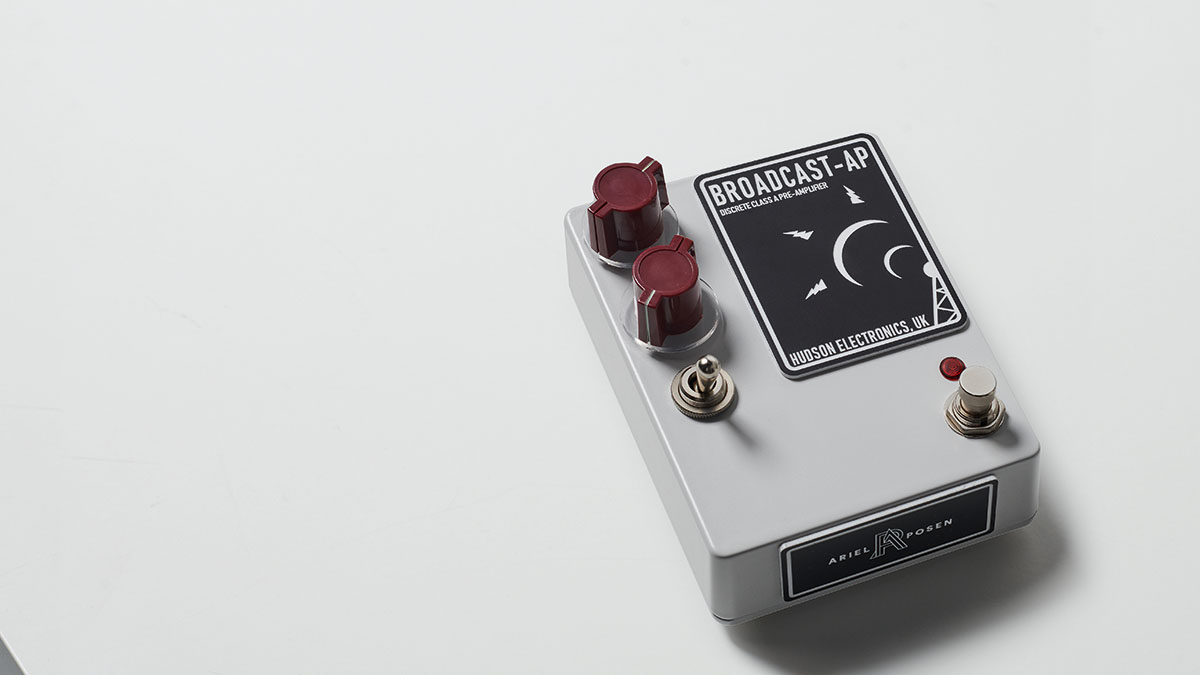
How do you get on when it comes to fretless guitar? Does it relate to playing slide in that you’re playing on the frets rather than behind them?
“I thought the same thing, but it’s not at all easy. If you play slide on a fretless it’s essentially the same thing. But playing with your fingers intonating is difficult, especially if you’re playing chords. So it takes a little shift of your mind to approach it differently than you would a standard guitar.
“Fretless makes me play a little differently and it inspires different sounds that the slide doesn’t quite do. I use it a lot on sessions for other people or when I’m producing, just like chordal things – it gives a slidey, slippery sound that doesn’t sound like slide or anything else. It’s really fun.”
You’re known for using a lot of alternative tunings and yet you tour with two guitars – one dropped to B standard, the other in open C. How does this work out on the live stage?
“Here’s the thing. I’m still at a point touring-wise where I don’t have someone taking my gear around for me. The most I can bring, without it being a huge hassle, is two guitars. So when I’m recording, I’ll use a lot of guitars in standard tuning, I’ll use guitars and open E, open Eb, open D, open Db, C sometimes.
When I’m recording, anything goes. I’m not an elitist with tunings, I just like the low sounds, but as much as the low sound is satisfying, it won’t always sit well in a mix
“The thing about having a B standard guitar and open C guitar is that the open C one can be an open C#, open D, open Eb, open E by using a capo. That gives me that possibility without having different guitars. And same with the B standard. I can be in standard tuning, I can be in D standard, Db standard, C standard… It just gives me all the options while not having to bring 10 guitars out with me. So right now that’s the reason I have those two with me.
“When I’m recording, anything goes. I’m not an elitist with tunings, I just like the low sounds, but as much as the low sound is satisfying, it won’t always sit well in a mix. In fact, I use the baritone stuff a lot in my music, but when I’m producing music for others and doing other sessions, often it doesn’t really have a place. You want your sounds and your parts to be bright and you want them to cut through. So I tend to lean towards brighter-sounding guitars and standard tuning and shinier kinds of things.”
What attracted you to playing in drop tunings first of all?
“It was kind of an accident. It was on my first record, How Long. I have this old Teisco Tulip guitar, it’s super temperamental, just kind of crappy, I bought it for 50 bucks. I was just messing around with it and I was like, ‘What happens if I tune it to B standard, just for fun?’
“I recorded a song called Get You Back on it – the whole song is that guitar – and it just had this mojo to it that I suddenly felt drawn to. But that guitar was so temperamental, I could never play it live, it would feed back. So that’s what inspired me to ask Matt [Eich at Mule Resophonic Guitars], ‘Hey, can we make a Strat version of the Mule in B standard, so it can handle it?’
“Once I got it and I started getting used to it, I found that it didn’t sound like a baritone. It sounded like a guitar with just a wider range of frequency than a normal electric does in standard tuning. You know how it is, once you get used to it, it’s hard to leave it. It’s very satisfying and it’s just become a signature part of my sound.”
What gauge of string do you use on the B standard guitar?
“I’ve been doing 0.017 to 0.064 and that just makes B standard or open C feel like you’re playing 11s, essentially. But when I play standard tuning, I still play 0.011 to 0.054. I have a couple of Telecasters that I like with 12s for some reason. I like a fight, I’m not a guy that’s ripping up and down the fretboard. I don’t need a fast action, but obviously I need higher action for slide. But I like a fight – I dig in – so those kinds of gauges feel right for me.”
What does the immediate future hold for you now?
“This year will be a busy year of touring and there will be more music to come. Like I said, 2021 was a very heavy release year. Last year it was just five songs that came out as a little treat for everybody. So I think you can expect some new music to come along this year as well, without giving away too much…”
- Mile End II is out 13 January on independent release.
With over 30 years’ experience writing for guitar magazines, including at one time occupying the role of editor for Guitarist and Guitar Techniques, David is also the best-selling author of a number of guitar books for Sanctuary Publishing, Music Sales, Mel Bay and Hal Leonard. As a player he has performed with blues sax legend Dick Heckstall-Smith, played rock ’n’ roll in Marty Wilde’s band, duetted with Martin Taylor and taken part in charity gigs backing Gary Moore, Bernie Marsden and Robbie McIntosh, among others. An avid composer of acoustic guitar instrumentals, he has released two acclaimed albums, Nocturnal and Arboretum.


